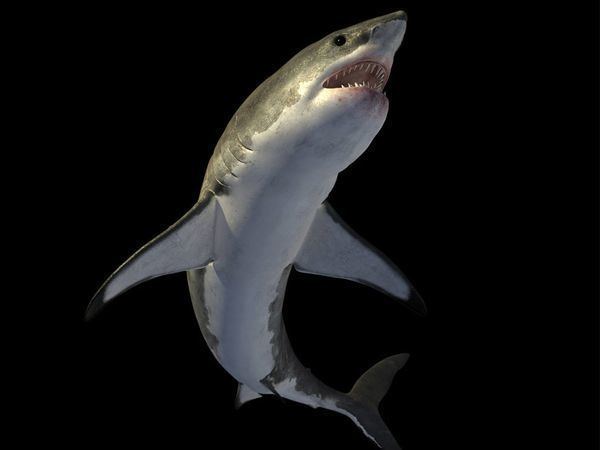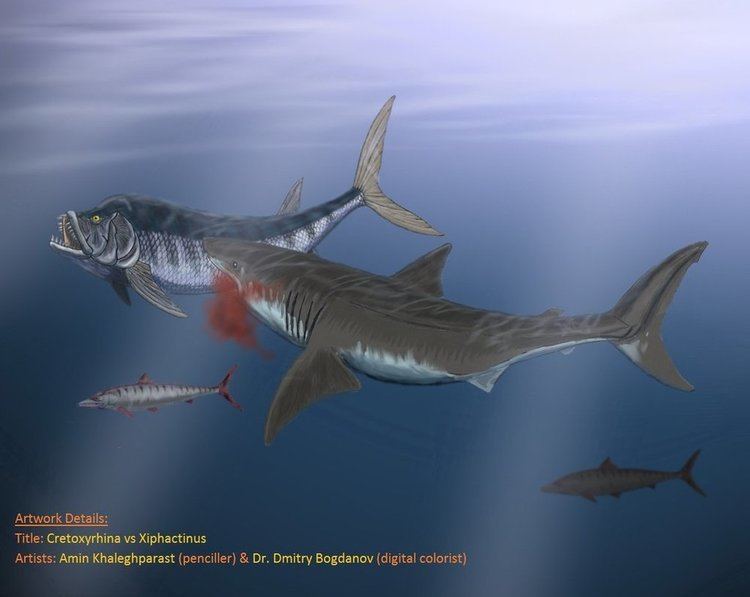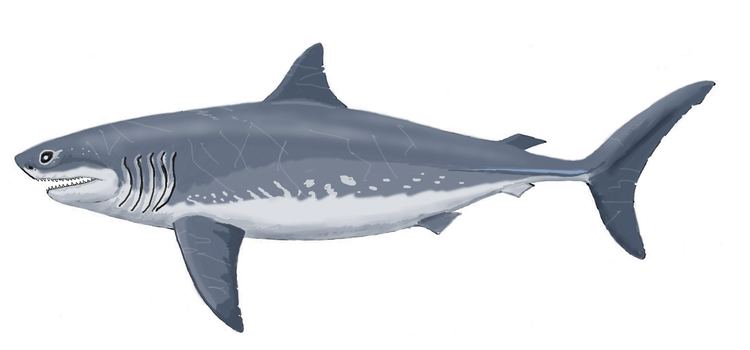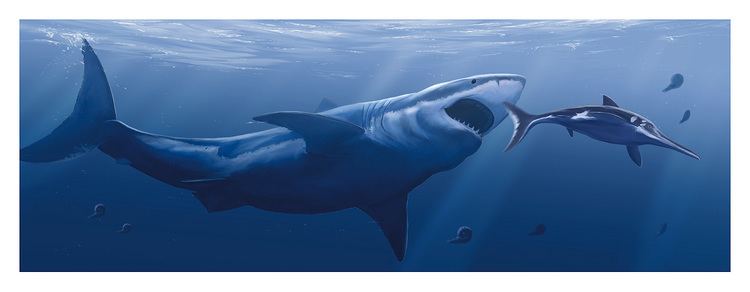Kingdom Animalia Subclass Elasmobranchii Order Lamniformes Scientific name Cretoxyrhina mantelli Rank Genus | Phylum Chordata Superorder Selachimorpha Family †Cretoxyrhinidae Higher classification Cretoxyrhina | |
 | ||
Similar Squalicorax, Xiphactinus, Tylosaurus, Ptychodus, Cretolamna | ||
New cretoxyrhina mantelli stk
Cretoxyrhina mantelli was a large shark that lived about 100 to 82 million years ago, during the late Cretaceous period. It is nicknamed the Ginsu shark in reference to the Ginsu knife, since it fed by slicing into its victims with its knife-sharp teeth. It had no common name in the early literature, although over 30 synonyms were assigned to it. Its genus name is creto- (for "Cretaceous") prefixed to Oxyrhina ("sharp-nosed"), its original name.
Contents
- New cretoxyrhina mantelli stk
- Cretoxyrhina shark
- Description
- Discovery
- Paleobiology
- Paleoecology
- References

Cretoxyrhina shark
Description
Cretoxyrhina is among the most well-understood fossil sharks to date. Several preserved specimens have revealed a great deal of insight about the physical features and lifestyle of this ancient predatory shark.

The fossil teeth of C. mantelli are up to 7 cm long, curved, and smooth-edged, with a thick enamel coating.

The jaws of Cretoxyrhina contained up to seven rows of teeth, with 34 teeth in each row of its upper jaw and 36 in each row of its lower jaw.

Cretoxyrhina mantelli grew up to 7 metres (23 ft) long, and exceeded the extant great white shark, Carcharodon carharias, in size.
Discovery
This shark was first identified by the famous Swiss Naturalist Louis Agassiz, in 1843, as Cretoxyhrina mantelli. However, the most complete specimen of this shark was discovered in 1890, by the fossil hunter Charles H. Sternberg, who published his findings in 1907. The specimen comprised a nearly complete associated vertebral column and over 250 associated teeth. This kind of exceptional preservation of fossil sharks is rare, because a shark's skeleton is made of cartilage, which is not prone to fossilization. Charles dubbed the specimen Oxyrhina mantelli. This specimen represented a 20-foot-long (6.1 m) shark. It was excavated from Hackberry Creek, Gove County, Kansas.
In later years, several other specimens have also been found. One such specimen was discovered in 1891 by George Sternberg, and was stored in a Munich museum. This specimen was also reported to be 20 feet long, but was destroyed during a bombing raid on Munich in World War II.
Paleobiology
Cretoxyrhina was the largest shark in its time and was among the chief predators of the seas. Fossil records revealed that it preyed on a variety of marine animals, such as mosasaurs like Tylosaurus, plesiosaurs like Elasmosaurus, bony fish like Xiphactinus, and protostegid turtles like Archelon.
Paleoecology
This shark lived in Cenomanian–Campanian seas worldwide, including in the Western Interior Seaway of North America.
